Health food
 Diet number 15
Diet number 15

Diet number 15 is used for various diseases that do not require the appointment of a special therapeutic diet in the normal state of the gastrointestinal tract. Table 15 is transitional to everyday home nutrition during the patient's recovery period, as well as after following another therapeutic diet.
The purpose of the diet is to provide nutrition to the patient according to physiological norms in a hospital setting.
 Diet number 14
Diet number 14

Diet number 14 is prescribed for urolithiasis with an alkaline urine reaction and precipitation of phosphorus-calcium salts (phosphaturia) in the urine.
The purpose of the appointment is to help restore the acidic reaction of the urine and, thus, to prevent the formation of sediment in the urine.
Diet number 14 is characterized by the restriction or exclusion of alkalizing foods. Included in the diet are those foods and dishes from them that contribute to a change in the reaction of urine to the acid side. In the absence of contraindications, the patient is recommended to drink plenty of fluids.
 Diet number 13
Diet number 13
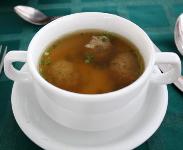
Diet number 13 is prescribed for acute febrile conditions accompanying infectious diseases, tonsillitis, conditions after operations. Purpose of Table No. 13 Appointment:
- maintaining and increasing the resistance (protective forces) of the body;
- decrease in intoxication;
- sparing the digestive system in bed rest and feverish conditions.
 Diet number 12
Diet number 12

Diet number 12 is prescribed for functional conditions and diseases of the central nervous system, accompanied by increased excitability of the patient. The purpose of the appointment of table number 12 is to reduce the load on the work of the central nervous system. Restriction of table salt - up to 6 grams per day.
The composition of diet number 12:
- proteins - 80-90 grams (55-60% - animals);
- fats - 70 grams (30% - vegetable);
- carbohydrates - 350 grams.
Energy value - 2300-240 kcal.
 Diet number 11
Diet number 11
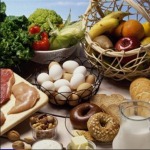
Diet number 11 is prescribed for the following diseases and conditions:
- tuberculosis of the lungs, lymph nodes, bones, joints - in the stage of a mild exacerbation or attenuation of the process, in the absence of concomitant diseases of the internal organs;
- reduced body weight after surgery, infections.
The purpose of the appointment of table No. 11 is to increase the body's resistance (defenses), enhance overall nutrition, restore vitamin balance, and enhance recovery processes in the affected organ.
 Diet 10c
Diet 10c
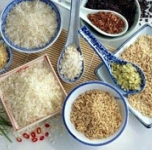
The 10c diet is indicated for atherosclerosis, which mainly affects the vessels of the brain, heart and other internal organs. Also showing are:
- myocardial infarction in the stage of scarring;
- IHD and hypertension due to the presence of atherosclerosis.
Purpose of Table No. 10 appointment with:
- reduction of manifestations of metabolic disorders;
- slowing down the development of atherosclerosis;
- improvement of blood circulation processes; Read completely "
 Diet 10a
Diet 10a
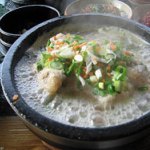
Diet 10a is indicated for diseases of the cardiovascular system, accompanied by severe circulatory failure (II-III degree), myocardial infarction in the acute and subacute periods.
The purpose of the appointment of table number 10a:
- improvement of the activity of the cardiovascular system;
- increased blood circulation;
- sparing the digestive system, kidneys, liver;
- reduction of edema;
- normalization of metabolism.
- Read completely "
 Diet number 10
Diet number 10

Diet number 10 is indicated for diseases:
1. Cardiovascular system:
- rheumatic heart defects in the stage of compensation or with circulatory failure of the 1st degree;
- hypertension I and II stages;
2. diseases of the nervous system, accompanied by irritability, a tendency to excitability;
3. kidney diseases:
- chronic nephritis and pyelonephritis with changes in indicators in the urine sediment;
- acute and chronic pyelitis.
 Diet number 9
Diet number 9

Diet number 9 is prescribed for diabetes, but only if there is no acidosis and diseases of the internal organs.
Purpose of Table No. 9 :
- creating conditions in the body to maintain a positive carbohydrate balance;
- prevention of lipid metabolism disorders.
 Diet number 8
Diet number 8

Diet number 8 is indicated for obesity with the absence of concomitant diseases of the digestive and cardiovascular systems. This is due to the fact that these diseases require a certain diet, prescribed individually.
The purpose of the 8th table : enhancing metabolism, in particular lipid metabolism and water and electrolyte balance, in order to eliminate excess body fat in the patient.
 Diet number 7
Diet number 7

Diet number 7 is shown:
- with acute nephritis at the stage of recovery;
- chronic nephritis with mild changes in the composition of the urine sediment;
- nephropathy of pregnant women;
- hypertension;
- in cases where a salt-free diet is necessary.
The purpose of the appointment of the seventh table is to create moderately gentle conditions for the work of the kidneys. At the same time, the restriction in the diet of table salt helps to reduce hypertension and reduce edema.
 Diet number 6
Diet number 6
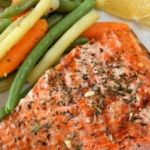
Diet number 6 is prescribed for uric acid diathesis and gout, erythremia, and in cases where meat and fish products should be excluded from the diet. The purpose of the appointment of the 6th table is to normalize purine metabolism, as well as reduce the formation of uric acid in the body.
With the physiological norm of proteins, refractory fats and products rich in purine compounds are excluded. Table salt is limited. Introduced into the diet are those foods that contain alkaline radicals. Overweight patients are restricted from carbohydrates.
 Diet number 5
Diet number 5

Therapeutic diet number 5 is indicated for chronic diseases of the liver and biliary tract - hepatitis, cholecystitis, cirrhosis of the liver without the acute stage in the absence of concomitant diseases of the stomach and intestines.
The purpose of table number 5 is to promote the restoration of impaired liver function by the following effects:
- accumulation of glycogen in the liver;
- normalization of liver fat metabolism by limiting dietary fats, mainly refractory ones, as well as the introduction of lipotropic substances and vitamins;
- reducing the intoxication effect on the liver by regulating bowel function;
- stimulation of bile secretion;
- exclusion of foods that irritate the liver.
 Diet number 4
Diet number 4

Therapeutic diet number 4 is prescribed for gastroenterocolitis, colitis - acute and chronic in the acute stage, dysentery in the acute period, as well as for conditions after operations on the intestines.
The purpose of table number 4 is to maximize the sparing of the intestine - both mechanical and chemical, to minimize peristalsis and fermentation processes. Significantly reduce the consumption of fats and carbohydrates, proteins are given within the lower limits of physiological needs. Energy value - about 2000 kcal per day.
 Diet number 3
Diet number 3

Diet number 3 is prescribed for intestinal diseases without exacerbations and in the stage of unexpressed and fading exacerbation. The main reason for the appointment of the third table is constipation.
The purpose of table number 3 is to increase intestinal motility and regulate its emptying with the aim of strengthening the associated slow metabolic processes. In the diet, increase the amount of foods rich in vegetable fiber, prescribe a plentiful drink of mineral water.
 Diet number 2
Diet number 2

Diet number 2 is indicated for chronic gastritis with reduced secretion, chronic enterocolitis in remission, dysfunction of the masticatory apparatus, in the postoperative period, after an acute period of an infectious disease.
The purpose of diet number 2 is a moderately sparing diet aimed at normalizing the secretory and motor function of the stomach and intestines. Read completely "
 Diet number 1
Diet number 1
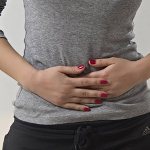
Diet number 1 is prescribed during the period of remission of peptic ulcer for 2-3 months, as well as during exacerbation of gastritis with increased secretory function and when the exacerbation of peptic ulcer subsides and during the formation of the ulcer scar.
The goal of following diet number 1 is to be gentle on the stomach and duodenum by limiting mechanical and eliminating chemical irritants.
 Diet 0
Diet 0

Zero diet, table number 0 or diet 0 is intended for feeding patients in the postoperative period with interventions on the organs of the gastrointestinal tract (GIT). Another indication for a zero diet is a state of consciousness that accompanies reduced reactivity. This is possible with cerebrovascular accidents, craniocerebral injuries, feverish conditions. Read completely "
 Therapeutic diets: tables
Therapeutic diets: tables
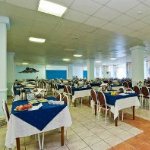
For various diseases, preparation for research, as well as in postoperative conditions, therapeutic diets are prescribed: tables with numbers assigned to them. Consider what diets are, as well as indications for them.
Diet (table) No. 0
It is prescribed in the first days after operations on the stomach and intestines, as well as in a semi-conscious state. Read completely "